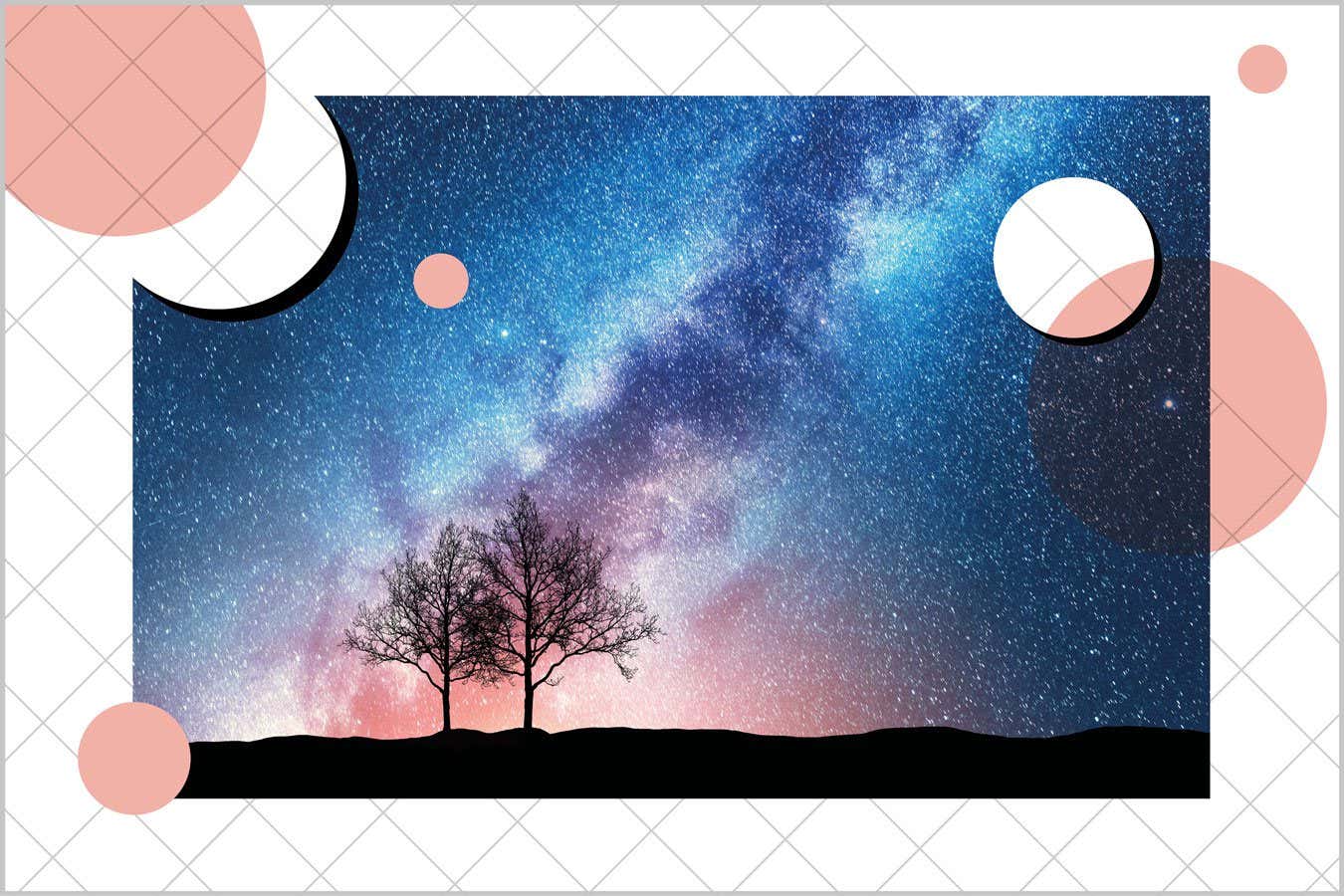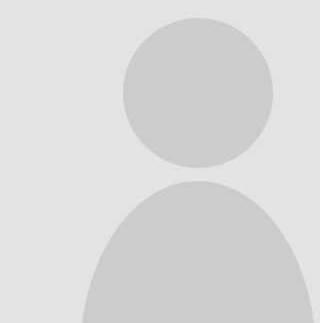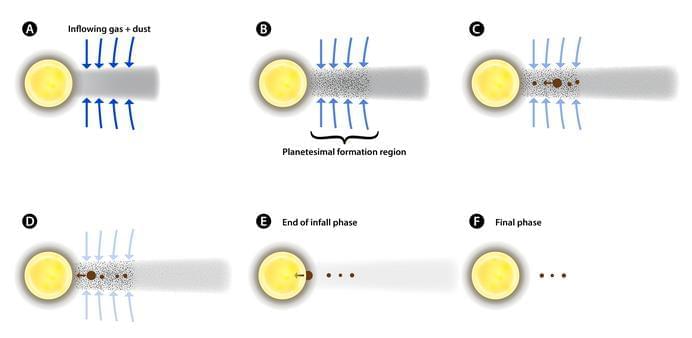Conditions in our little pocket of the universe seem to be just right for life — and the much-debated anthropic principle forces us to wonder why



The Space Renaissance 4 All Gallery (www.sr4allgallery.com) is an international initiative, to carry a Science-Technology-Art-Partnerships payload into lowEarth orbit, where it will circle the planet before returning for scientific study and public engagement. The Gallery is inside Nyx capsule of The Exploration Company that is scheduled to launch aboard a SpaceX Falcon 9 from Vandenberg Base, California on 22June 2025 23:15 CEST, orbit Earth, reenter the atmosphere and return intact — making its payload available for scientific and technical evaluation, museum exhibitions, and public outreach. It was initiated by LUNEX CEO and SRI President Prof. Bernard Foing (former ESA Chief Scientist and lead of first ESA lunar mission SMART1). “This is not just a technological mission. It is a Space Renaissance for All statement,” said Prof. Bernard Foing. “Together with MoonMars and our partners, we are creating a human-centric space future that carries our stories, our knowledge, and our spirit.”
“We have developed a space payload to celebrate the values and goals of SRI Space Renaissance, LUNEX and partners. It is using spare from ISS Expose astrobiology tray own 2009−2010” says Bernard Foing. “The gallery contains: Science samples from NASA Ames and Universities (astrobiology, soils and rocks from Earth, meteorites from Moon, Mars, asteroids); Artscience pieces from ArtMoonMars, MoonGallery, MoonMars Museum, SRI; a Digital library of documents, images and music; a Tribute to 40 partners of Space SDG18 and LUNEX.”
“It is really exciting, for us of Space Renaissance International, to see this beautiful program coming to its goal: reaching orbit and re-entering to Earth on a critical test mission! Space Renaissance 4 All was of great inspiration also during the 3rd National Congress of Space Renaissance Italia, that we celebrated a few days ago in Catanzaro, at the Magna Graecia University!! Thanks to all participants, to the Exploration Company and all the Sponsors of this fantastic venture into space! Long live to Space Renaissance, long live to Space Art and Space Artists!” says Adriano V. Autino, SRI CEO and Founder.

In the grand cosmology of Star Trek, the Prime Directive stands as both a legal doctrine and a quasi-religious tenet, the sacred cow of Federation ethics. It is the non-interference policy that governs Starfleet’s engagement with pre-warp civilizations, the bright line between enlightenment and colonial impulse. And yet, if one tilts their head and squints just a little, a glaring inconsistency emerges: UFOs. Our own real-world history teems with sightings, leaked military footage, close encounters of the caffeinated late-night internet variety — yet in the Star Trek universe, these are, at best, unacknowledged background noise. This omission, this gaping lacuna in Trek’s otherwise meticulous world-building, raises a disturbing implication: If the Prime Directive were real, then the galaxy is full of alien civilizations thumbing their ridged noses at it.
To be fair, Star Trek often operates under what scholars of narrative theory might call “selective realism.” It chooses which elements of contemporary history to incorporate and which to quietly ignore, much like the way a Klingon would selectively recount a battle story, omitting any unfortunate pratfalls. When the series does engage with Earth’s past, it prefers a grand mythos — World War III, the Eugenics Wars, Zephram Cochrane’s Phoenix breaking the warp barrier — rather than grappling with the more untidy fringes of historical record. And yet, our own era’s escalating catalog of unidentified aerial phenomena (UAPs, as the rebranding now insists) would seem to demand at least a passing acknowledgment. After all, a civilization governed by the Prime Directive would have had to enforce a strict policy of never being seen, yet our skies have been, apparently, a traffic jam of unidentified blips, metallic tic-tacs, and unexplained glowing orbs.
This contradiction has been largely unspoken in official Trek canon. The closest the franchise has come to addressing the issue is in Star Trek: First Contact (1996), where we see a Vulcan survey ship observing post-war Earth, waiting for Cochrane’s historic flight to justify first contact. But let’s consider the narrative implication here: If Vulcans were watching in 2063, were they also watching in 1963? If Cochrane’s flight was the green light for formal engagement, were the preceding decades a period of silent surveillance, with Romulan warbirds peeking through the ozone layer like celestial Peeping Toms?
#eldddir #eldddir_space #eldddir_earth #eldddir_homo #eldddir_animals#eldddir_disaster #eldddir_ocean #eldddir_bombs #eldddir_future #eldddir_tech #eldddir_j…
Weyland-Yutani’s latest bio-weapon isn’t a Facehugger — it’s something far worse. T. Ocellus doesn’t kill… it takes control. Discover the terrifying truth behind the Alien franchise’s newest nightmare.
#alienearth #scifihorror #TOcellus.
🔔 Subscribe for more deep dives into sci-fi, horror, and gaming lore!



A team of scientists from the SETI Institute and the University of California at Davis has documented, for the first time, humpback whales producing large bubble rings, like a human smoker blowing smoke rings, during friendly interactions with humans. This previously little-studied behavior may represent play or communication.
The paper is published in the journal Marine Mammal Science.
Humpback whales are already known for using bubbles to corral prey and creating bubble trails and bursts when competing to escort a female whale. These new observations show humpback whales producing bubble rings during friendly encounters with humans. This finding contributes to the WhaleSETI team’s broader goal of studying non-human intelligence to aid in the search for extraterrestrial intelligence.

For more than 40 years, the Search for Extraterrestrial Intelligence (SETI) organization has turned its gaze toward the cosmos in search for an answer to one of humanity’s greatest questions: Are we alone? Often taking the form of the “Fermi paradox”—a 75-year-old thought experiment that explores why there are so many worlds, yet seemingly no alien civilizations—this grand question has inspired a lot of possible solutions. Maybe life is much rarer than we imagine? Maybe it’s incredibly difficult to evolve into a modern civilization like ours? Or maybe aliens are speaking in a language we simply don’t understand.

The universe speaks in mathematics, yet we experience it in poetry. This fundamental paradox — that objective quantities somehow give rise to subjective qualities — represents perhaps the most profound mystery in the architecture of consciousness. At the precise intersection where measurable physical magnitudes transform into felt experience lies perception itself, functioning as the universe’s most elegant translation device, converting the quantitative substrate of reality into the qualitative texture of conscious life.
Consider the photon, that discrete packet of electromagnetic energy oscillating at precisely 550 nanometers. Physics describes it with mathematical precision: wavelength, frequency, amplitude — pure quantity divorced from any subjective dimension. Yet when this photon encounters the rhodopsin molecules within our retinal cells, something extraordinary occurs. The quantitative description remains accurate but suddenly insufficient. The same electromagnetic radiation that physics measures as wavelength 550nm becomes, through the alchemy of perception, the irreducible experience we call “green.” This transformation represents not merely a change in descriptive language but a fundamental ontological shift — the emergence of an entirely new category of being.
Maurice Merleau-Ponty recognized this threshold when he observed that “the body is our general medium for having a world” (Merleau-Ponty, 1945/2012, p. 147). The lived body serves as the crucial mediator between the quantitative realm that physics describes and the qualitative realm that consciousness inhabits. Through our sensorimotor engagement with the world, objective magnitudes undergo a metamorphosis into subjective meanings. The body is not merely a receiver of information but an active participant in the creation of experiential reality itself.